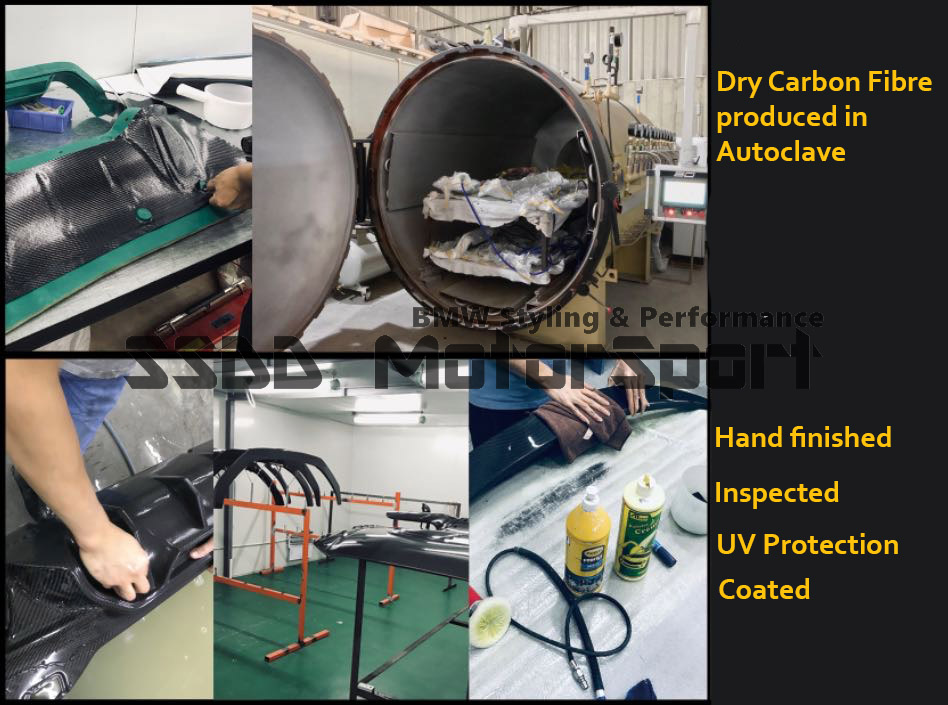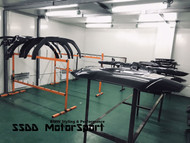Exciting new projects in 2020! Pre-Preg Carbon Fibre Parts On the Way
Posted by Teddy on 12th Mar 2021
Following the global trend in recent years to be come a more responsible and sustainable business, at SSDD MotorSport we are constantly working together with our business partners and suppliers to test and develop new ways of manufacturing and supplying our products and services in a more eco friendly and sufficient way.
We are pleased to announce that we are working hard with two of our partner factories to discard the old ways of making carbon fibre parts, and have invested heavily to purchase the latest high pressure AUTOCLAVE equipments to produce carbon parts that are stronger, better quality and have better fitment. The new manufacturing method will produce far less waste and contaiminations compared to the traditional ‘wet-laid’ method.
‘WET’ vs. ‘DRY’ Carbon Fibre
There are various ways of manufacturing carbon fibre parts and two of the most common methods seen in today’s aftermarket parts market are the DRY and WET methods.
Let’s start with the traditional way first. What is Wet Carbon Fibre?
The name ‘wet’ comes from the manufacturing process which usually leaves the finished product with excessive epoxy resin coating (sometimes referred to as gelcoating), giving it a glossy ‘wet’ look. There are different ways of making wet carbon, typically, for a more cost-effective method, most aftermarket carbon fibre parts are made by placing carbon fibre cloth onto a moulded base product (materials such as ABS plastic, FRP Plastic etc), coat it with resin and left to cure. This manufacturing method is cheap and quick, making it very popular for products seen in the aftermarket automotive world.
So what is ‘DRY’ Carbon Fibre?

Typically a dry carbon fibre product does not have the ‘wet’ look right after the manufacturing process. This is because there is no excessive coat of resin on top of carbon cloth once made. In dry carbon manufacturing process, the resin is built into the carbon cloth (often referred to as Pre-Preg carbon fibre as resin is pre-impregnated into the fibre) and placed into a high tech AUTOCLAVE oven to cure under high heat and high pressure. This way it removes most imregularities and resin is cured into the cloth giving the product a higher strength. The finished result is a product which is 70% lighter, with less imperfections, and produce less waste. This application is often used by car manufacturer and global motorsport teams to produce higher quality carbon parts. Nowadays, if used for road vehicle applications, the dry carbon parts will also have a UV-resistant clear coat applied to give it a glossy look and to protect them from daily elements.
By moving our production lines towards using the dry carbon fibre method, we will be able to supply you with premium carbon fibre parts that are lighter and stronger and also be producing less waste and use less materials as often due to our strict quality requirements, many finished wet-laid products are rejected and returned back to the factories.
So keep watching this space and we look forward to receiving our first few batches of the new dry carbon fibre parts from our partner factories.

